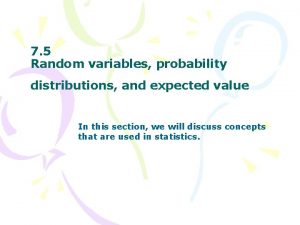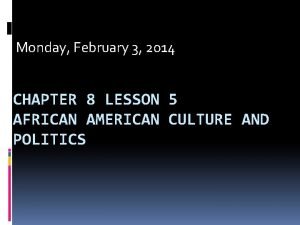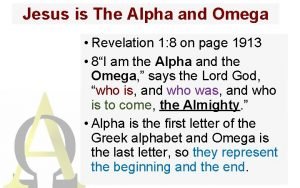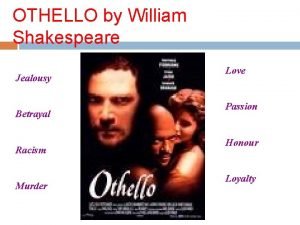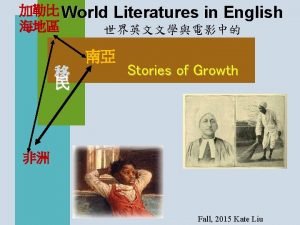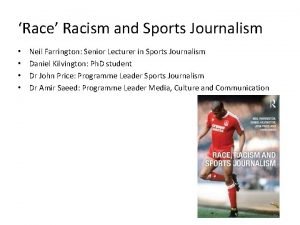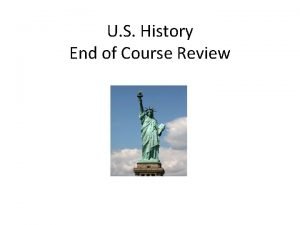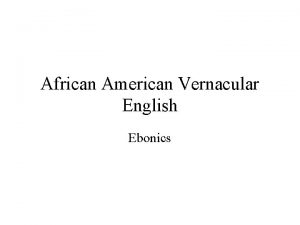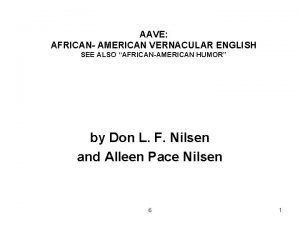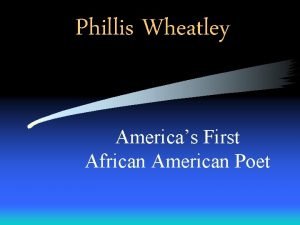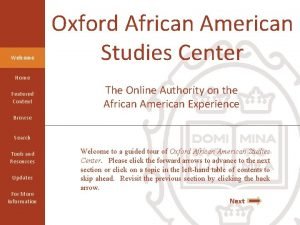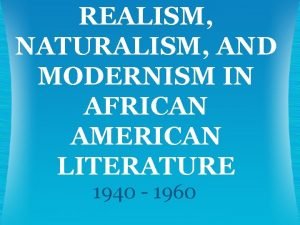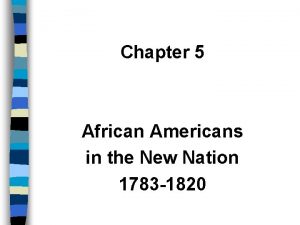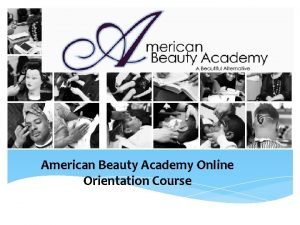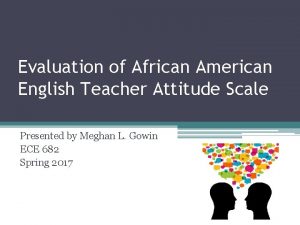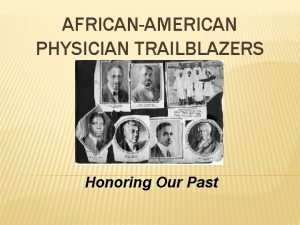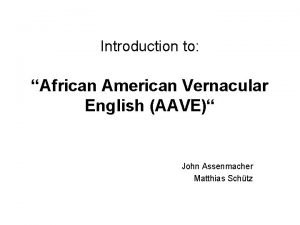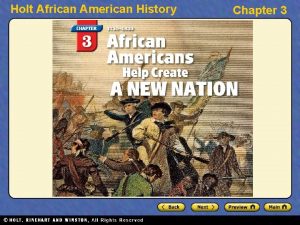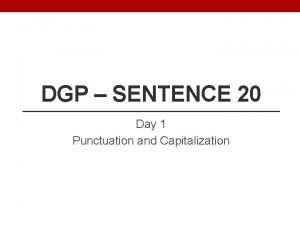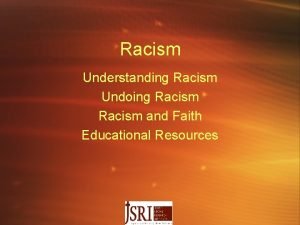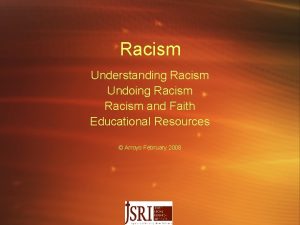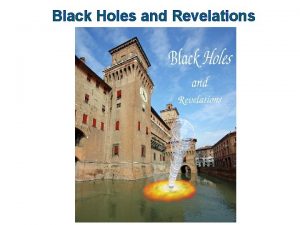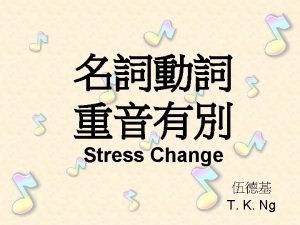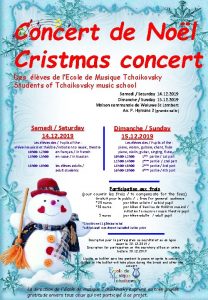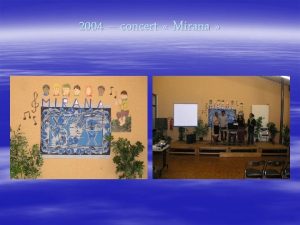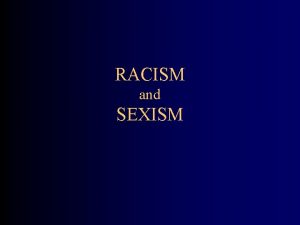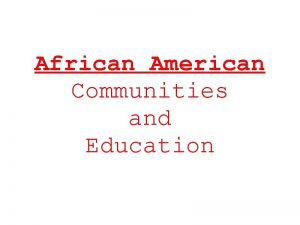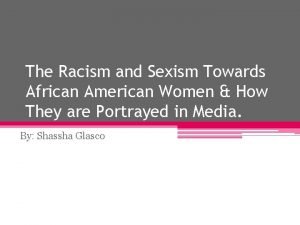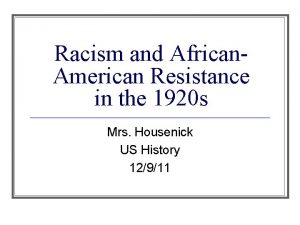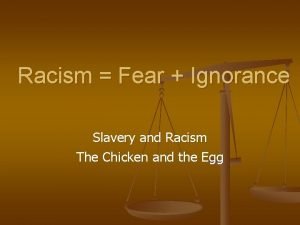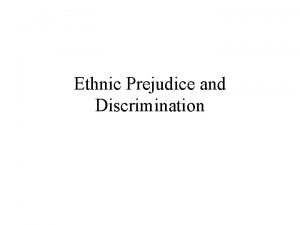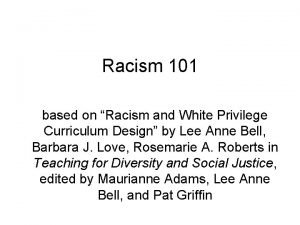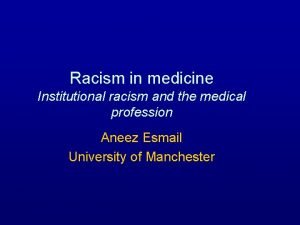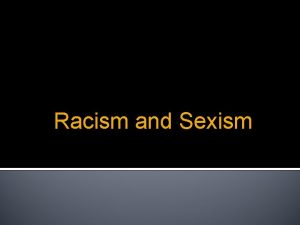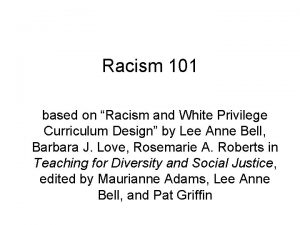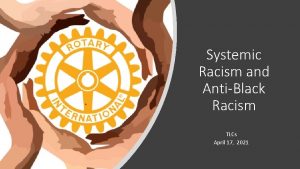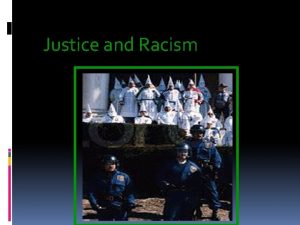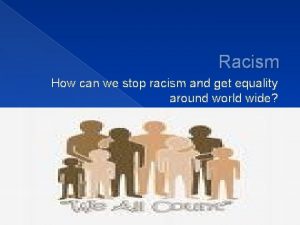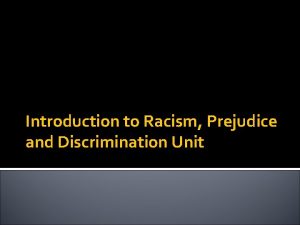Module II Revelations and Racism African American Concert
























- Slides: 24

Module II - Revelations and Racism- African American Concert Dance Topics for the day: • Intro to modern dance • • • Harlem Renaissance and the Minstrel stereotypes • Hemsley Winfield and Edna Guy • Asadata Dafora and Kykunkor Afro-American pioneers in concert dance

What is concert dance? • Philosophy of early modern dance - movement joined with soul. An inner statement of spiritual belief. Psychic meanings are intuited and felt more than literally expressed. • Modern is a fine art, intellectual in its origins, based on ideas. Challenges a purely entertainment aesthetic • Creative - movement invention departs from ballet. Belief in power of movement was critical. • Focus on inner world of experience • Dance serves as a vehicle for self awareness, of inner motivations. Especially relevant for Af-Am culture that was stripped of the connection to its culture.

Harlem Renaissance and search for identity • Pervasive Minstrel Stereotypes • Harlem Renaissance - Negro Renaissance – power of art to challenge stereotypes and reclaim dignity • Langston Hughes poet, 1926 article “The Negro Artist and the Racial Mountain, ” - Negro artist’s need to create to express their own dark skinned heritage without fear or shame, if whites or blacks like it ok, if not, ok, they must create now as strong as they can.

Langston Hughes (1902 -1967) poems – THE NEGRO SPEAKS OF RIVERS I’VE known rivers: I've known rivers ancient as the world and older than the flow of human blood in human veins. My soul has grown deep like the rivers. I bathed in the Euphrates when dawns were young. I built my hut near the Congo and it lulled me to sleep. I looked upon the Nile and raised the pyramids above it. I heard the singing of the Mississippi when Abe Lincoln went down to New Orleans, and I've seen its muddy bosom turn all golden in the sunset. I've known rivers: Ancient, dusky rivers. My soul has grown deep like the rivers.

Langston Hughes (1902 -1967) poems Question When the old junk man Death Comes to gather up our bodies And toss them into the sack of oblivion, I wonder if he will find The corpse of a white multi-millionaire Worth more pennies of eternity, Than the black torso of A Negro cotton-picker?

What shall the Negro Dance About Question posed in 1933, Worker’s Dance League at Harlem YMCA, following a performance by Hemsley Winfield. • Ad Bates - “ a young Negro should dance about the things that are vital to him. ” • Anonymous “our dance should express the strivings of the New Negro. ” Thhis term reflects the new consciousness of the Harlem Renaissance.

The Development of Black Modern Dance in America – Three Phases 1) End the myth of the minstrel presentation of the Negro, and the myth that their was no African culture. Introduction of authentic African Material 2) Black choreographers explore contemporary African American culture. a. Two agendas - kills the minstrel myths and celebrate potential for a new art that will grow out of the Africanist aesthetic. 3) Freedom to create from total fabric of Black experience and to create from within or outside of African-American heritage.

The Pioneers in Black Concert Dance • Helmsley Winfield • Edna Guy

Edna Guy

Asadata Dafara (Horton) native of Sierra Leone Kykunkor – The Witch Woman- Dafora was 45 in 1934 debut Kykunkor - included a series of authentic African dances – Agunda -dance of joy, Eboe - jester dance, Battoo- challenge dance. Kirstein and other critics reflect racist stereotypes still in currency. Kykunkor portrayed blacks as human beings- this was its revelation and success, Dafora turned away stereotypes of African barbarism by referring to American lynchings. A huge success - paved way for blacks taken seriously in concert dance











Asadata Dafara (Horton) Ostrich Dance

92 nd St. YMHA presented Negro Dance Evening split into • Part I: African • Part II: West Indies • Featuring Edna Guy, Asadata Dafora, young Katherine Dunham and Talley Beatty

92 nd St. YMHA presented Negro Dance Evening split into

 A rock concert producer has scheduled an outdoor concert
A rock concert producer has scheduled an outdoor concert Lesson 5 african american culture and politics
Lesson 5 african american culture and politics Revelation 1:8
Revelation 1:8 Shakespeares tragedy about racism and jealousy
Shakespeares tragedy about racism and jealousy Othello themes jealousy
Othello themes jealousy Racism and slavery
Racism and slavery Race racism and sports journalism
Race racism and sports journalism African american fighter pilots
African american fighter pilots Aave english
Aave english Aave words
Aave words Prentice hall african american history
Prentice hall african american history First african american poet
First african american poet Oxford african american studies center
Oxford african american studies center Naturalism vs modernism
Naturalism vs modernism African american cinema history
African american cinema history Chapter 5 african american in the new nation
Chapter 5 african american in the new nation African american beauty academy
African american beauty academy What is urban literature
What is urban literature African american english teacher
African american english teacher Dr lewis bass
Dr lewis bass African american vernacular english example
African american vernacular english example Holt african american history
Holt african american history Wentz concert hall
Wentz concert hall Suggestopedia adalah
Suggestopedia adalah Hey who wants to sign up to hear stefanos band in concert
Hey who wants to sign up to hear stefanos band in concert
